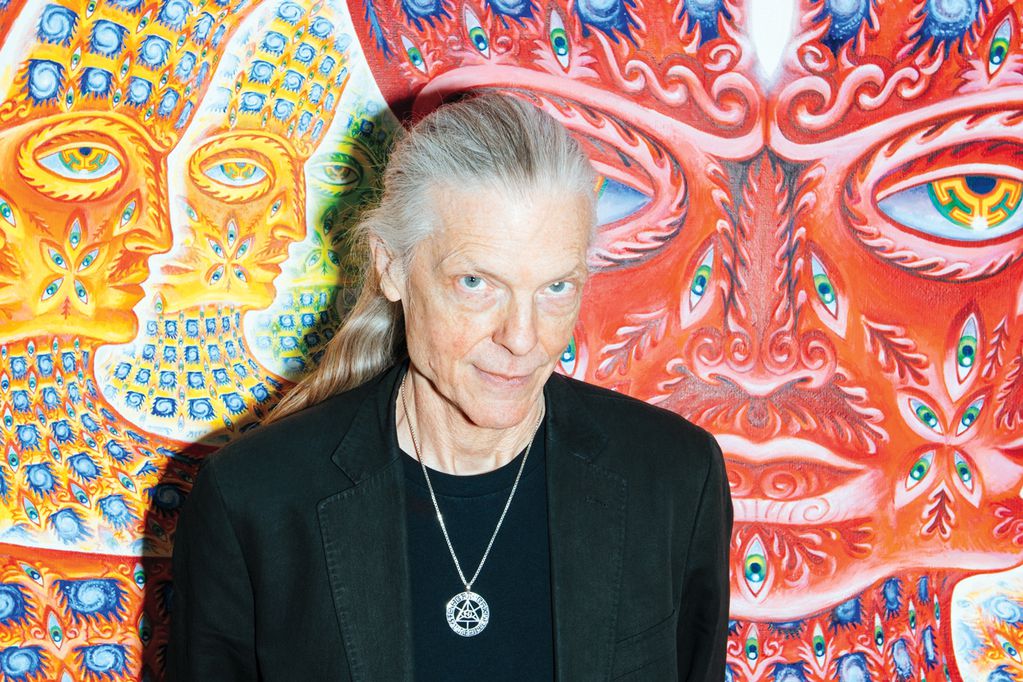By Gabriel García August 11, 2022
DMT (dimethytriptamine) is a natural psychoactive compound of the hallucinogen class, present in varying amounts in many plants, such as mimosas, acacias, mimosas or chacrunas. Traces of DMT can also be found in some mammalian organisms, although its function in our body is still unknown. DMT belongs to the chemical family of tryptamines and is a very simple compound, very similar to tryptophan (a common amino acid in the diet). Like other psychedelic substances that we have already seen in previous articles, such as LSD, it acts on the serotonin nerve receptors.
Antón Gómez-Escolar tells us in his book Essential Guide to the Psychedelic Renaissance about the history of this substance that, although its physiological role is unknown, DMT has been used for centuries for ritualistic, religious and therapeutic purposes in many Latin American communities as part of ayahuasca.
Although the use of DMT in Western countries has been associated with a recreational context (particularly in the form of pure and vaporized DMT crystals), the tradition of use for ritual, spiritual and therapeutic purposes is beginning to transfer to our culture, making the use of this substance in recreational or non-ceremonial contexts practically non-existent today.
On the other hand, there is increasing research on its therapeutic potential, with studies on its use for the treatment of depression, anxiety or addictions.
But what effect does DMT have on your brain?
As Anton Gomez-Escolar tells us in the Essential Guide to the Psychedelic Renaissance (pp. 224-225), whether vaporized or orally, DMT reaches the bloodstream and crosses the blood-brain barrier to reach the brain, where it exerts pharmacological effects by binding to the serotonin 5-HT2a neurotransmitter receptors, as well as the 5-HT1a and 5-HT1a receptors.
There has been much speculation as to whether the DMT produced by our body has a specific function, and there are theories that relate it to dreams or near-death experiences, but there is much speculation but still little certainty on the subject.
The effects of this substance vary. On the one hand, if the person is in a trance state, lying down with eyes closed and not interacting much with the environment, he/she experiences a landscape of intense images, to the point of giving the impression of a space trip through galaxies and encounters with other “entities”.
 The paintings of Alex Grey are often considered a good approximation of the visual effects of ayahuasca.
The paintings of Alex Grey are often considered a good approximation of the visual effects of ayahuasca.
In contrast, the experience of oral ayahuasca is similar to that of psilocybin, except for a tendency to more nausea and a difference in the intensity and duration of the effects. The ceremonial setting in which ayahuasca is consumed also gives the experience a spatial imagination.
You can read more information on the subject in the Essential Guide to the Psychedelic Renaissance, by Antón Gómez-Escolar. We also recommend Psychedelics and Mental Health, by Irene de Caso and Your Brain on Psychedelics, by Genís Oña, where you will learn the keys to the effects of psychedelics, capable of producing significant changes in the processes of perception, thought and consciousness. The book also includes a prologue written by one of the greatest eminences in this field, José Carlos Bouso, scientific director of ICEERS.
The book, like the rest of the Psychonaut’s Guide series, is now available on Amazon in physical and eBook format, as well as Apple Books. In addition, all titles are available in Spanish version on GuiasdelPsiconauta.com




